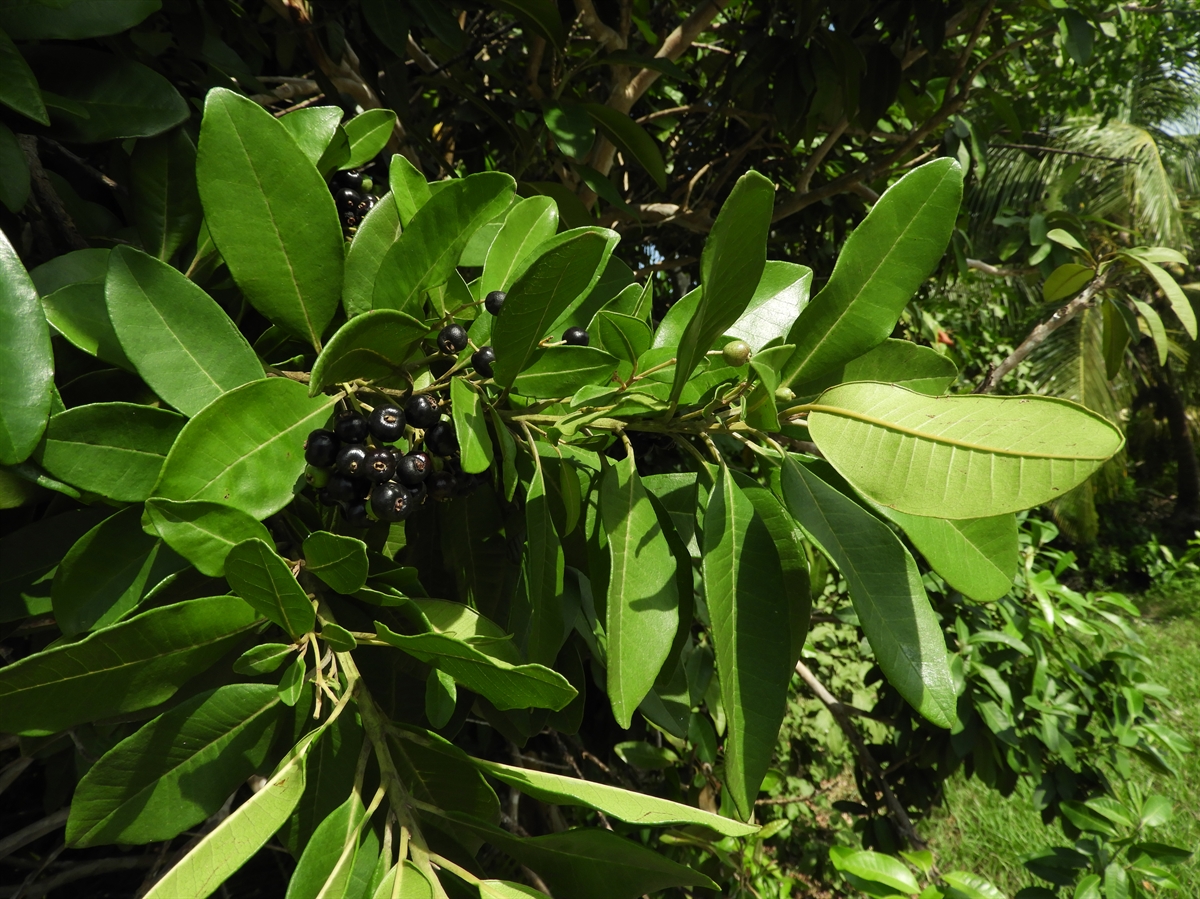Habit: Pimenta dioica grows as a tree up to 20 m in height with 4-angled stems. The leaves are arranged oppositely, elliptic to oblong, up to 15 cm in length, with an entire margin and acute leaf apex. The abaxial surface has pellucid dots/glands. The leaves release a pleasant odor when crushed.
The complete, perfect, actinomorphic flowers occur in panicles are fragrant. Each flower is subtended by a bract. The calyx has 4, green sepals. The corolla has 4, white petals. There are numerous stamens. The calyx, corolla and androecium are fused at the base forming a hypanthium. The sepals, petals, and pedicel have pellucid dots/glands. The carpel has an inferior ovary with 2 locules and numerous ovules. The fruit is a berry that turns dark blue/black with maturity and retains the sepals at its apex.
Habitat: Pimenta dioica occurs in Human Altered environments (yard, gardens, and farms).
Distribution: Pimenta dioica is NOT native to the Lucayan Archipelago and does not grow in natural areas. It is native to Central America and the Greater Antilles. It is now grown in many tropical and subtropical regions.
Cultural/Economic/Medicinal usage: Pimenta dioica is not known to be used medicinally but it is used as a spice in cooking, and baking. Elsewhere in the Caribbean it is used as a flavoring for liqueurs, in soaps and perfumes, as well as aiding in digestion and treating certain types of pain.

